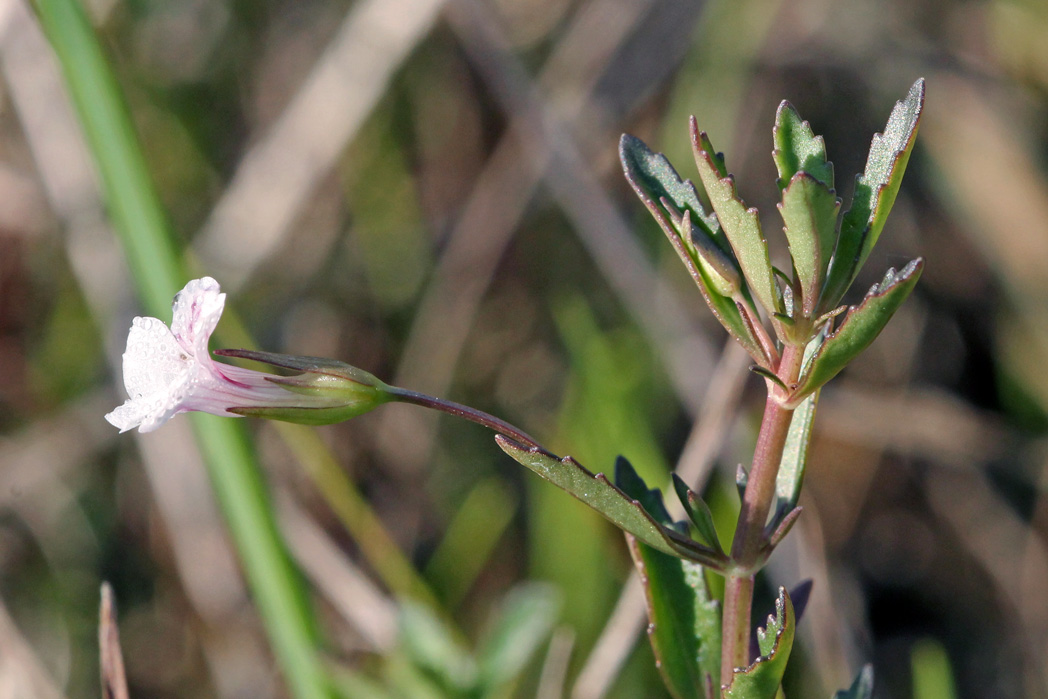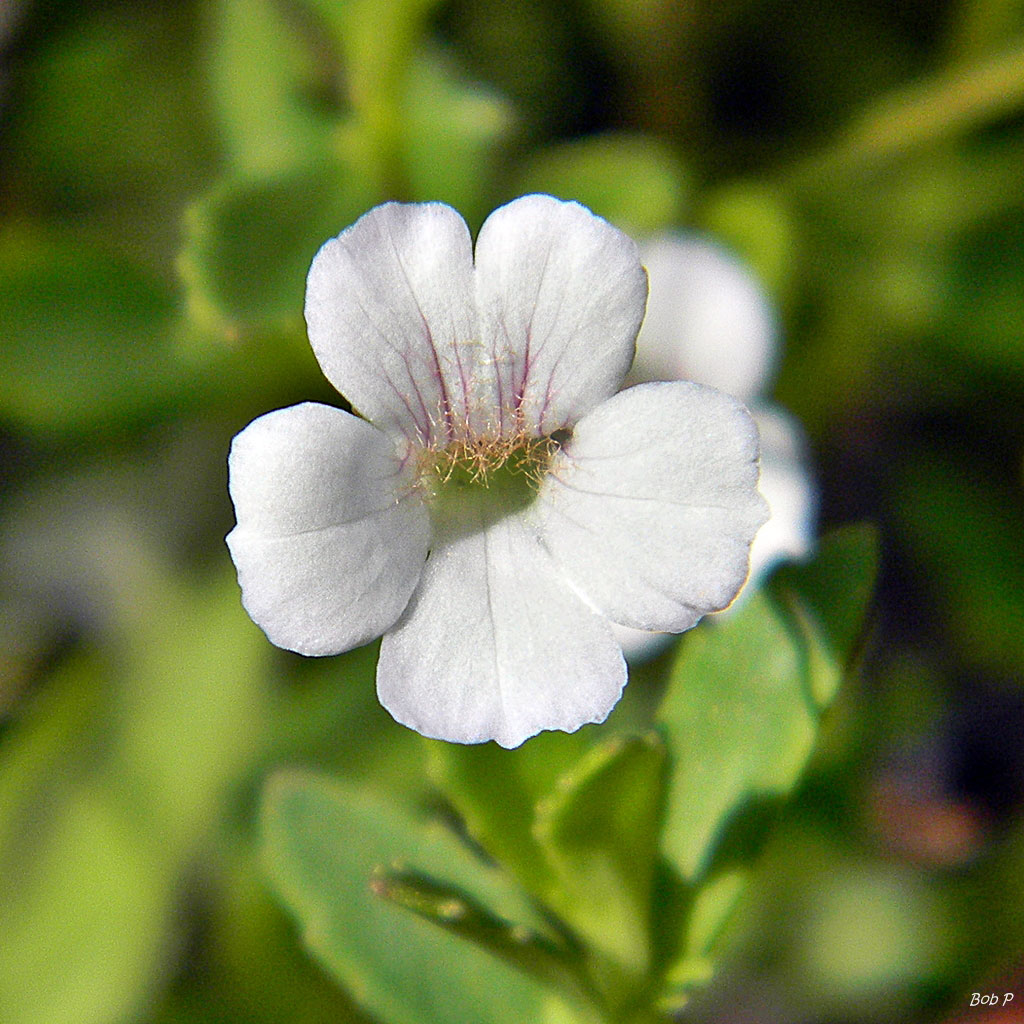Axilflower
Pictured above: Axilflower (Mecardonia acuminata subsp. peninsularis) taken at Sweetbay Natural Area in Palm Beach County, Florida. Photo by Bob Peterson. Click on terms for botanical definitions. View post as a PDF
Axilflower is a common but often overlooked perennial wildflower found in moist open habitats. The plant rarely reaches a height of more than 6 inches and is frequently horizontal. It blooms spring through fall (sometimes year-round) and attracts mainly bees. Three subspecies occur in Florida: The most common, M. acuminata subsp. acuminata, is found from the Panhandle through Central Florida. M. acuminata subsp. peninsularis is endemic to the peninsula and occurs from Levy, Marion and Volusia counties south to the Florida Keys, and in Lafayette County. M. acuminata subsp. microphyla, the rarest of the three, has been documented only in Calhoun and Washington counties.
Axilflower’s tubular blooms have five white or pink-tinged lobes and a hairy, pink-veined throat. Flowers are solitary, pedicellate and axillary. The calyx is also five-lobed. Leaves are thick, dark grayish-green and elliptic to lanceolate with pointed or toothed apices. They may be sessile or have short petioles and are oppositely arranged. Leaf margins may be toothed or entire. Stems are smooth and generally procumbent. Seeds are born in ovoid capsules. The plant turns black as it dries, earning it another common name: Blackening hedge hyssop.

Axilflower (Mecardonia acuminata subsp. peninsularis) showing tubular bloom and toothed leaf margins. Photo taken at Tosohatchee Wildlife Management Area by by Mary Keim
The genus Mecardonia was formerly classified in the Scrophulariaceae (Snapdragon or figwort) family. Its name pays homage to Antonio Meca y Cardona, an 18th century Spanish patron of the botanical arts. The species epithet acuminata is from the Latin acumen, or “sharpened,” and refers to the leaf apex.
Family: Plantaginaceae (Plantain)
Native range: Throughout Florida (see note above on subspecies distribution)
To see where natural populations of Axilflower have been vouchered, visit florida.plantatlas.usf.edu.
Hardiness: Zones 8–11
Lifespan: Perennial
Soil: Moist wet sandy soils
Exposure: Full sun to minimal shade
Growth habit: ±6” tall, equally wide or wider; often procumbent
Propagation: Seed, cuttings, division
Garden tips: Axilflower’s horizontal growth habit and tendency to spread make it a good choice for moist to wet open habitats such as pond or marsh edges. It also does well in a container.
Axilflower plants are rarely available from nurseries that specialize in Florida native plants. Visit www.PlantRealFlorida.org to find a nursery in your area.

